Thank you for visiting! By the way… any links on this page that lead to products on Amazon and other stores/partners are affiliate links Aquarium Store Depot earns a commission if you make a purchase.
Are you looking for a captivating and unique pet to add some excitement to your home aquarium? The Panther Crab could be the perfect choice! This freshwater crab is full of interesting traits, so in this guide, we’ll explore their history, appearance, and more. We’ll also cover everything about caring for them properly, as well as how breeding works with these crabs. Let’s get started learning all there is to know about panther crabs!
Key Takeaways
- Knowledge of Panther Crabs’ origin, behavior and care requirements are key to keeping them as pets.
- Mimic their natural habitat with a sandy substrate and secure hiding places for the best tank setup.
- Provide a balanced diet, understand their social interaction & avoid bad tank mates to ensure your crab is healthy & happy!
Species Overview
| Scientific Name | Parathelphusa pantherina |
| Common Names | Panther Crab |
| Family | Gecarcinucidae |
| Origin | Sulawesi, Indonesia |
| Diet | Omnivore |
| Care Level | Moderate |
| Activity | Noctural |
| Life Span | Up to 10 years (but usually 3-5) |
| Temperament | Semi-aggressive |
| Tank Level | Bottom |
| Minimum Tank Size | 20 gallons – for a single crab |
| Temperature Range | 72-82°F (22-28°C) |
| Water Hardness | 4-12 dKH |
| pH Range | 7.0-8.0 |
| Filtration/Water Flow | Moderate |
| Water Type | Freshwater Tanks |
| Breeding | Egg layer |
| Difficulty to Breed | Difficult |
| Compatibility | Community Tanks (With Caution) or Sole Species |
| OK, for Planted Tanks? | With Caution |
Understanding Them
Panther Crabs, also referred to as House Panther Crabs or Parathelphusa pantherina, are an attractive type of freshwater crab that make a good pick for both beginner and knowledgeable aquarists. This distinctive fully aquatic crab is from the Indonesian island of Sulawesi’s Lake Matano. Its native habitat has molded its one-of-a-kind traits and behaviors.
Their appealing look with leopard like spots plus red tipped legs not only differentiates them from other freshwater crabs but earned them the nickname “Leopard Crabs” too. When they reach full size in captivity, these stunning creatures can be up to 5 inches long and live around 10 years if given proper care.
Origins And Natural Habitat
Panther Crabs, living in the depths of Lake Matano on Sulawesi Island’s warm and slightly acidic waters with sandy substrate, are among many aquatic creatures that call this Indonesian island their home. To ensure optimal care for your Panther Crabs it’s essential you replicate an atmosphere as close as possible by providing them warmth and soft sand substrate similar to what can be found within Lake Matano accompanied by access to sunlight if needed. Doing so will make sure these captivating crustaceans have everything necessary at hand and exhibit exciting behavior just like back in its wild habitat!
Appearance
Panther Crabs are undeniably captivating, with their dark brown or black shells covered in white and yellow leopard-like markings resembling those of a Leopard Crab. These little crustaceans each have ten legs along with large claws useful for scavenging and defending themselves if needed. Seeing one Panther crab is already stunning. When multiple ones gather together (more on how to do this later), it creates an unforgettable sight to behold. Their long, delicate limbs tipped off by vibrant red add extra charm, making them the perfect choice for any aquarium display.
Average Size
Panther Crabs are one of the larger species among freshwater crabs, capable of achieving up to 5 inches in length when fully extended. This impressive size places them far ahead of their counterparts and is a desirable trait for those looking to have these captivating creatures as pets.
Keeping this in mind, it’s highly recommended that they should be housed with enough space since such a large tank will offer more comfort and welfare for them compared to any smaller enclosures.
Lifespan
Panther Crabs, if given appropriate care and a healthy lifestyle, have the ability to reach their fullest potential with an expected lifespan of up to 10 years in natural habitats. When looked after as household pets 3-5 years is the typical lifespan range
Caring For Your Panther Crab
To take proper care of your crab, you need to provide for their basic needs by creating a comfortable tank that replicates their natural habitat. This includes monitoring water parameters and providing them with an appropriate diet plan. With the right environment as well as dietary requirements in place, panther crabs can thrive under your watchful eye!
The first step is getting the right tank size and setup. Let’s discuss that now.
Tank Setup
When setting up a proper Panther Crab tank setup, the best option is to create an environment replicating their natural habitat in Lake Matano. The substrate should be sandy, as this will provide them with comfortable living conditions and enable them to engage in typical digging and burrowing activities. Floating plants, rocks, or even caves can also act as safe hiding places during times when they need additional security while molting.
Make sure you consider the minimum size of 20 gallons per single crab if not more, depending on how many crabs are being kept together. Larger tanks help reduce potential conflicts while ensuring enough space for exploration and feeding purposes! Lastly, don’t forget about having a tight-fitting lid over your tank, which is particularly important since Panthers are great at escaping!
Water Quality Parameters
Maintaining ideal water parameters is essential for the health of your crab. The best environment for them includes a pH in between 7.5 and 8.5, hardness levels from 5-8 dKH, as well as a temperature range of 76 – 82°F). Keeping an eye on these metrics and taking corrective action when necessary can make sure that your crab stays healthy and contented.
Regular tank cleanings are also important if you want always to ensure good quality water conditions in the aquarium. Being inverts, they are particularly sensitive to high nitrate levels. Regularly test your water with a proper test kit and do water changes if your nitrates creep up over 40PPM to keep them healthy.
Best Aquarium Test Kit For Freshwater
With all the essentials and accurate testing, this test kit is the best one to get you started
Diet And Feeding
Panther Crabs should be fed daily with a balanced diet of calcium-rich items such as unshelled shrimp or cuttlebone. They enjoy other foods like nutritious green vegetables, including zucchini and spinach, and live or frozen sources like brine shrimp and bloodworms. They will also eat dead plant matter and algae, making them a useful member of a crewup crew.
Supplement their meals with algae wafers for added nutrition to guarantee they remain in good health and to keep more active fish from stealing their food. As these crabs are slower moving, making sense they get enough to eat is a concern. Keep them well fed to curb their aggression as they will hunt for other sources of food if they are hungry – such as your fish!
Behavior And Social Interaction
When it comes to Panther Crabs, their behavior and social interactions must be well understood. This species is territorial, which might cause conflict among themselves (especially with females). Thus, caution should be taken when determining appropriate tank mates for them. The good thing is that males and females are easy to tell apartment (which we will explain how later). When it comes to tankmates, you need to be careful about what fish interact as those that are slow or like to venture into their territory may attacked, killed, or eaten.
They are noctural crabs and tend to be very reclusive in a tank. Just one panther crab in the tank,while the overall safest addition will interact less than a group.
Suitable Tank Mates
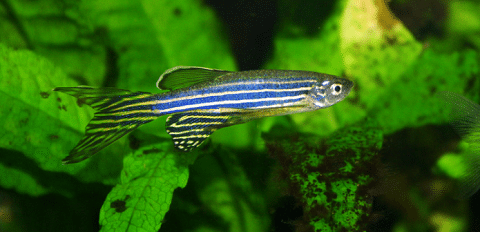
Due to their territorial nature, Panther Crabs should ideally be kept in a species specific tank. This ensures they can peacefully cohabitate with the other creatures of the aquarium without fear of attack from aggressive or dominant fish. However, if you want to go with other freshwater animals, you can certainly attempt it, though it comes with risk.
These crabs, regardless of fish species, are opportunistic hunters. They will happily eat any fish or aquatic animal they can get their hands on. So keep this in mind with this list as these fish may be fast and can avoid the crab, but that doesn’t mean your chances of your crab eating or killing your other aquatic animals is zero:
- Fast tetras like neons
- Guppies
- Mollies
- Danio fish
You will increase your chances of success with plenty of shelter in the tank, ideally in a planted tank. The added shelter will curb aggression and keep the crab in the plants and away from these other fish that like to swim in the open.
Bad Tankmates
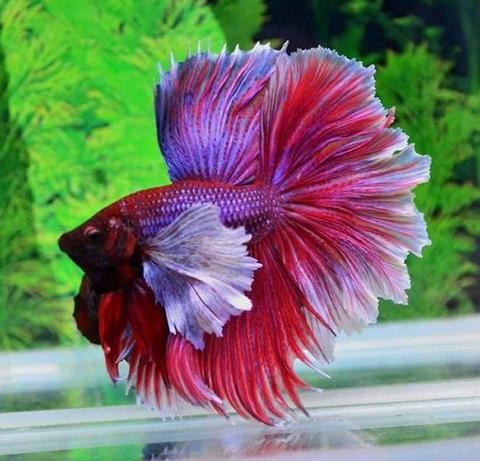
The aggressive and territorial Panther Crabs are predators of fish, which means that many tank mates may be unsuitable. You will one into one of two problems. Either the crab can eat the fish or inverts, or the fish or inverts can eat the crab when they molt.
This difficult balance makes it hard to find the right tank mates. In order to provide some guidance, here are some obvious bad fits to avoid:
- Dwarf freshwater shrimp
- Slow moving fish like Bettas or fancy goldfish
- Large aggressive fish like Cichlids
- Other crab species – they can fight
Hopefully, the list we provided in both sections will help you figure out what types of animals you want to keep with them
Breeding
In order to breed Panther Crabs successfully, the first step is to distinguish males from females. Unfortunately, however, it is difficult to breed these crabs in captivity. They are territorial and will fight
Panther crabs reach sexual maturity when they reach 2 inches in length. Having a sand bed helps so the female can bury itself. Once the young are hatched, it is best to remove the adult parents so the young are not eaten.
This is a complex topic and success has not been good for these crabs. The best documentation on the internet you can find is a Panther breeding project on Aquarium Advice. The article on the forum can be found here. It’s a recommended read to learn more about the process.
Male Vs Female Identification
Differentiating between a male and female Panther Crabs is not complicated thanks to their distinct telson shapes. Male crabs have slender, phallus-shaped tails, while females possess broader triangular shaped ones.
Male Female
Recognizing the sex of your Panthers Crabs is crucial for successful breeding and guaranteeing their own species’ safety by not adding too many males. Keeping an eye on these differentiations in shape can help ensure you are looking after both sexes adequately and effectively!
Common Health Issues
When breeding Panther Crabs, it is important to provide them with a well-balanced diet that contains plenty of calcium and also ensure their tank stays clean. Doing this can help keep them healthy and prevent some common illnesses from arising, such as softshells or the loss of limbs due to parasites. Regular observation of your crabs should be done as with any other fish. Generally speaking, the most common health issue is caused by lack of food or toxic water.
Other Species To Check Out
Not sure if this crab is for you? Check out our other crab guides below:
Frequently Asked Questions
Can panther crabs live with other fish?
Panther crabs are not demanding when it comes to care but as they can be predatory creatures, small shrimp, snails, and fish may become their prey. Having a spacious aquarium is ideal in order for them to coexist with other tank mates. These crustaceans need enough space and room so that nothing affects either them or their potential buddies. Fish should be fast and venture at the top of middle of the tank to have the best chance of success.
Are panther crabs pets?
Panther Crabs, while not commonly kept as home aquarium pets, are an attractive choice and relatively easy to look after. These crabs make for a stunning addition to any tank setting!
Are panther crabs rare?
The Panther Crab, a species not often seen in fish tanks, is an uncommon find. Despite its scarcity, it remains one of the more sought-after varieties of crab for home aquariums
Are panther crabs peaceful?
Panther Crabs have a territorial nature and they tend to go after slower fish, making them not peaceful. It is possible to keep these crabs with other active and swift varieties of fish though. As such, it’s essential that any creatures placed in the same tank be able to move quickly or else Panther Crabs could target them as prey.
What is the ideal tank size for a single Panther Crab?
Having a tank size of 20 gallons is the minimum recommended for keeping a Panther Crab content. This amount of space should enable it to thrive and stay in good health.
Closing Thoughts
Are you ready to begin the exciting adventure of having a Panther Crab as your pet? If so, it is important to become familiar with their natural habitat and overall characteristics such as size, coloring, and lifespan. This guide should have given you an overview on what you need to setup in order for you to succeed.
How has your experience been with these crabs? Let us know in the comments and let’s start a conversation. Thank you for reading!
- About the Author
- Latest Posts
I’m thrilled that you found Aquarium Store Depot! Here you’ll find information on fish, aquariums, and all things aquatics related. I’m a hobbyist (being doing this since I was 11) and here to help other hobbyists thrive with their aquariums! I adhere to a high quality Editorial Process and Review products with real life field usage and practical analysis.



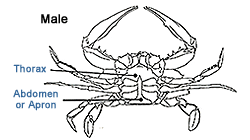


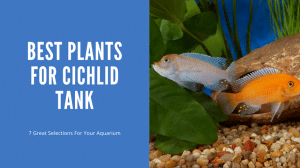

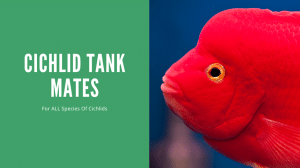
Do you know how fast their growth rate is? I got a tiny baby one from the pet store, I put her in my 75 gallon (no other fish/critters) but I’m curious how long it will take to get to mature or close to mature size.
Thanks
Moderate growth to my knowledge. They will grow up to 5 inches eventually.